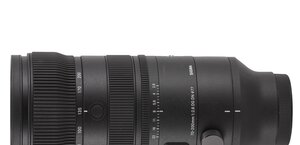Nikon Nikkor AF-S 28 mm f/1.8G
3. Build quality
As you can notice only the new Nikkor and the Canon feature an ultrasonic autofocus motor. The Nikkor is optically the most complex instrument of all (with the same number of elements as its faster predecessor). Taking into account the significant number of optical elements its weight, amounting to 330 grams, is a surprise. A less complicated Sigma weighs 500 grams and the slower Zeiss – as much as 530 grams. When it comes to the dimensions they remain typical for this type of equipment – you can see it well in the photo below, where the tested lens is positioned next to the Sigma 1.4/30 and the Nikkor AF 1.8/50D.
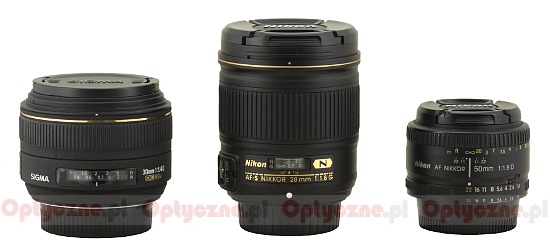 |
Please Support UsIf you enjoy our reviews and articles, and you want us to continue our work please, support our website by donating through PayPal. The funds are going to be used for paying our editorial team, renting servers, and equipping our testing studio; only that way we will be able to continue providing you interesting content for free. |
- - - - - - - - - - - - - - - - - - - - - - - - - - - - - - - - - - - - - - - - - - - - - - - -
The Nikkor AF-S 28 mm f/1.8G starts with a metal mount with contacts which surrounds a rear element, 29 mm in diameter. The element is positioned on the same level as the contacts when the distance scale is set at infinity. It hides about one centimeter deep when you pass to the minimum focus distance. The movement of the rear element doesn’t make the front element move so the lens focuses by shifting its optical system and the focal length as well. When the rear element hides inside the lens you can’t see any electronics parts and you can notice the inner part of the tube is well blackened.
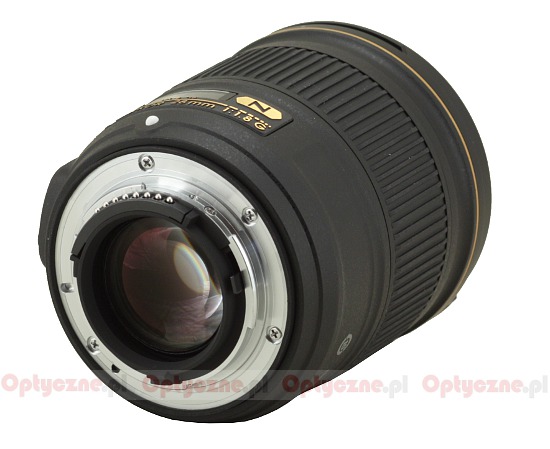 |
The proper casing of the lens (or in fact its outer part) is made of plastics. The first element you can find there is a white dot which makes the alignment with a camera body easier. Immediately behind it there is a plate with the name and the parameters of the lens which also includes a distance scale behind a window. The scale is clear, expressed in metres and feet. Right behind you can also see depth of field markings by f/16.
On the left there is a focusing mechanism mode switch (M, M/A) and, at the rear, the serial number, information about the basic properties of the lens and the fact that it was made in China.
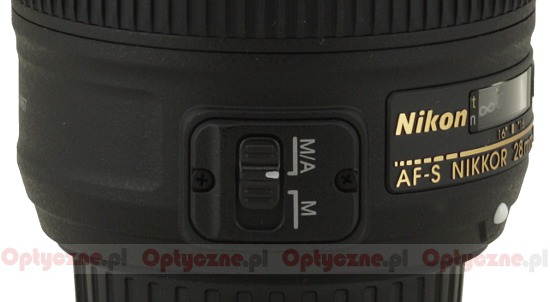 |
The next element of the body is a manual focus ring, 28 mm wide. Comfortable rubber ribbing cover most of it and it works quite smoothly, with a slight resistance. Unfortunately also here you can experience a bit of play when you start turning it. The first touch and a delicate shift of the ring don’t cause any changes of the focus unit. Unfortunately even if you spend almost 3,000 PLN on a lens you can’t be sure the Nikon company will spare you that trouble, so annoying in some situations. Only devices of really the highest quality, with very high price tags, are free of it.
Running the whole scale takes a turn through 90 degrees. This value is a bit too low to guarantee you comfortable work and precise settings in the MF mode.
Then you see an immobile part of the barrel, decorated by a golden stripe; it finishes with a hood mount. The front element of the lens doesn’t move and is 46 mm in diameter. It is surrounded by a non-rotating filter thread, 67 mm in diameter.
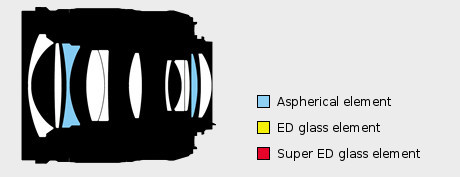
The Nikkor AF-S 28 mm f/1.8G consists of 11 elements positioned in 9 groups. Two elements are aspherical. Additionally inside you can find a circular aperture with seven diaphragm blades which can be closed down to the value of f/16. The producer boasts of using special nano crystal coatings.
Buyers get both caps, a petal-type hood and a soft pouch in the box.
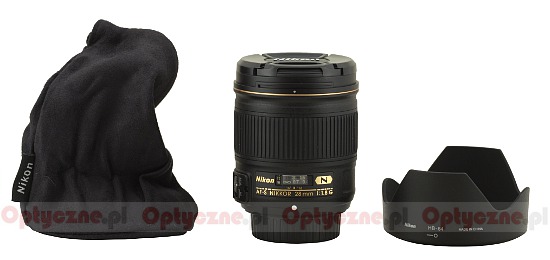 |




